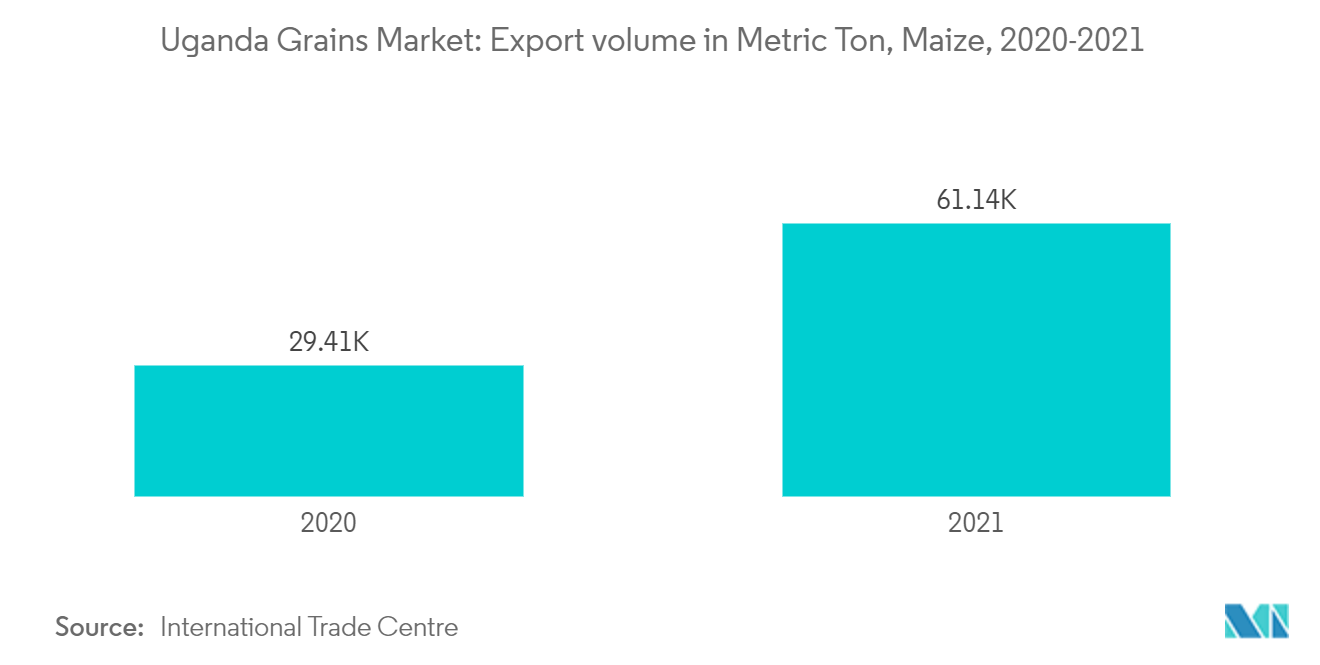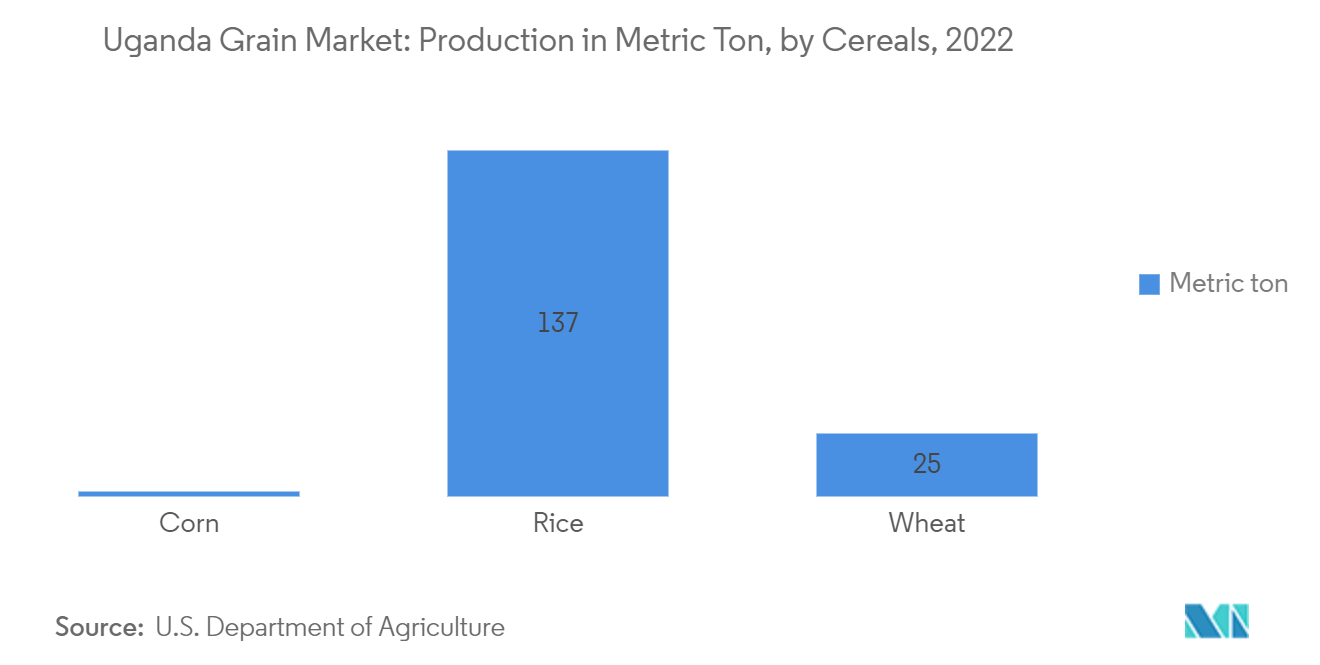Market Trends of Uganda Grains Industry
This section covers the major market trends shaping the Uganda Grains Market according to our research experts:
Increase in Regional Maize Exports is Driving the Market
Maize is one of the staple crops grown in Uganda, providing over 45.0% of the country's daily calorie consumption., To meet the domestic demand, most farmers grow maize on their farmland. According to the UN's Food and Agriculture Organization, Uganda's fertile agricultural land has the potential to feed 200 million people. Eighty PTO cent of Uganda's land is arable, but only 35% is cultivated.
According to the International Trade Administration, in 2021-2022, agriculture accounted for about 24.1% of GDP and 33% of export earnings. In recent years, there has been an increase in exports of maize to East African countries. The liberalized free trade environment between East African countries benefits the maize traders, leading to a rise in exports.
In March 2021, restrictions were imposed on maize importation by Kenya due to the low-quality standards of maize produced by Uganda, but the ban was lifted in May 2021. After the ban, the export quality and quantity improved. Only grain exports tested and certified by accredited labs in Uganda to meet acceptable safety levels are permitted into Kenya, which is expected to stimulate market growth during the forecast period. The country's Also, within the country, maize production has increased significantly.

Favorable Government Policies are Driving the Market
Grain trade and agro-processing play a crucial role in the national economy, but the sector is currently facing challenges such as inadequate supply due to lower production, the volatility of agriculture commodity prices, and inadequate storage facilities. The cereals production has declined in the year 2020 compared to the previous year 2019 due to various above-mentioned problems in addition to the pandemic impact on the agricultural sector in terms of the lack of labor and transportation facilities in the country. According to U.S. Department of Agriculture (USDA), among the cereals, corn production has increased with 2,800 metric ton in 2022 over the last five years followed by rice and wheat in the country.
In order to increase agricultural production and address post-harvest challenges, The Ugandan Ministry of Trade, Industry, and Cooperative introduced "The National Grain Trade Policy" in 2016, which was in line with Uganda's Vision 2040 and the National Development Plan II to improve the food security, income generation, and advancement of industrialization.
The Indian government and Uganda's State Minister for Foreign Affairs have committed to sharing knowledge, technology, and experience in agriculture to strengthen Uganda's agricultural sector, particularly in the areas of grains and dairy products, and to contribute significantly to Uganda's development. They also stated that the bilateral relationship between India and Uganda will continue to grow more intense and engaging and that it will have a positive effect in a variety of areas.
To address the lack of transportation facilities that the grain commodity sector is facing, the government launched interventions in 2019. The Uganda Railway Corp. has approved the upgrading of its 1266 kilometer gauge rail line for USD 267 million. In addition, in 2022, The African Development Bank provided USD 301 million to Uganda to upgrade the colonial-era meter-gauge rail linking to the Kenyan border to help cut transport costs which Uganda heavily relies on expensive road transport for its exports and imports mainly through Kenya.


